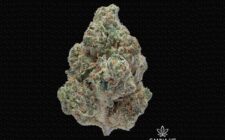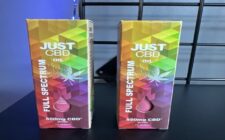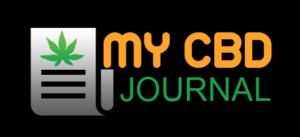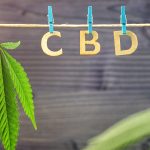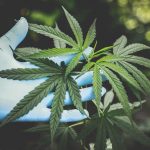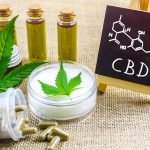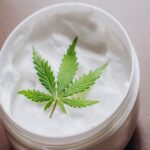Cannabidiol (CBD) may be a compound found in cannabis that’s known for its medicinal properties. For people that are unacquainted with this particular cannabinoid, CBD is simply a component of medical cannabis that’s entirely non-psychoactive, meaning that it doesn’t offer you the sensation of being high. While CBD goes mainstream in the wellness industry, the demand for the best sativa strains of cannabis is high.
It is found to counter the psychoactive properties of tetrahydrocannabinol (THC), a cannabinoid that does induce a high. So, what exactly does CBD do?
Does CBD Do Anything?
CBD has been praised for addressing various medical problems, including tension, sleeping disorders, anxiety, and skin conditions. Many hunts down CBD products for their comprehensive benefits and have made history guarding it’s mending powers.
As more cases are made, the will for friendly exploration proceeds. Researchers and wellbeing experts have investigated the impacts of CBD and, therefore, the positive medical advantages it can give.
The most grounded proof for CBD is its adequacy in rewarding youth epilepsy disorder, for instance, Dravet condition and Lennox-Gastaut condition. Ordinarily, these conditions don’t react to antiseizure drugs. Yet, various examinations have indicated that CBD can decrease the number of seizures and sometimes stop them from occurring. As lately, the FDA affirmed the primary cannabis-derived medication for these conditions called Epidiolex, which contains CBD.

How Does CBD Work?
To briefly explain, your body features a natural framework that communicates with dynamic synthetic mixes, like CBD. It’s referred to as the endocannabinoid framework (ECS).
Endocannabinoids are particles that are difficult to enact cannabinoid receptors. They’re created generally by the cells within the physical body. The two important cannabinoids are Anandamide and 2-AG. Anandamide is, in many cases, alluded to as “the happiness particle.” 2-AG was exposed in 1994 when researchers found its partiality for cannabinoid receptors.
The endocannabinoid framework is comprised of three sections:
- Endocannabinoids
- Receptors within the sensory system and around your body that endocannabinoids and cannabinoids bond with.
- Compounds also referred to as enzymes, help separate the endocannabinoids and cannabinoids.
To see how the endocannabinoid framework functions, you should initially understand one of the main essential ideas in science: homeostasis. The work of the endocannabinoid framework is to stay up to homeostasis or harmony within the body. All at once, for our bodies to feel their best, the natural frameworks found inside us must direct themselves.
Interaction With ECS
For instance, our bodies realize when it’s hot outside to begin perspiring to help us remain calm. This is often an aftereffect of our muscles working more enthusiastically to make more warmth, prompting sweat and eventually chilling off our bodies.
The endocannabinoid framework is engaged with numerous physiological procedures that influence temperament, torment, sensation, hunger, digestion, memory, rest, development, and insusceptible capacity. Cannabinoid receptors are known to be one among the foremost abundant in our focal sensory system!
Through receptors, ECS manages capacities, for instance,
- Food cravings and appetite
- Absorption of food, digestion
- Immune health
- Irritation, including neuroinflammation
- Disposition, mood
- Rest
- Reproduction
- Motor function
- Temperature moderation
- Memory
- Pain management
- Happiness, joy, pleasure
Will CBD Show on a Drug Test?
This is a standard question among first-time CBD users. Most drug tests test for THC, not CBD, as CBD doesn’t cause weakened judgment or impact motor functions. Notwithstanding, THC can exist in some CBD items and remain in your body for a substantial length of your time.
If this is often a worry for you, don’t stress. We generally recommend doing all of your explorations before buying CBD from storefronts, dispensaries, or online. You’ll get to guarantee that the CBD you’re purchasing is unadulterated and hemp-inferred. Thanks to the government guidelines in which industrial hemp-derived CBD contains 0.3% or less THC. For this example, THC wouldn’t appear on a drug test.
In any case, there are CBD products accessible to consumers that are derived from cannabis. Within the event that you are worried about passing a drug test, review the cannabis-derived CBD products beforehand, as they contain a better measurement of THC and can presumably show abreast of the drug test.
Make sure to specialize in the high THC levels in your products and check the cases’ authenticity by taking a gander at the Certificate of study (COA). These testaments are frequently given to the client and display CBD and THC dosage within the item.
Bottom Line
Extraordinary exploration measures are so far expected to demonstrate the adequacy of CBD in several cases, yet what’s to return is exciting, and researchers are confident. CBD has assumed control over the health and wellness market. Furthermore, CBD products are everywhere. Yet, there are still numerous questions surrounding it, especially its legality.


